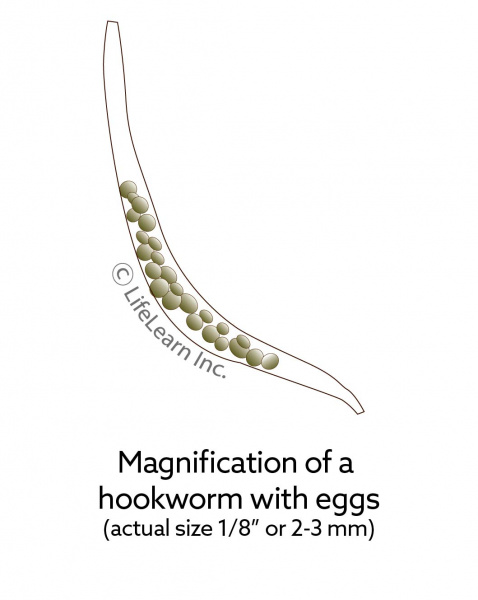

Education on sanitation and hygiene, specifically regarding the proper use of latrines and shoe-wearing.As the worms feed, they cause severe internal bleeding, leading to abdominal pain and diarrhea, anemia and eventual malnutrition. There, they mature into adult worms by attaching themselves to the intestinal wall and feeding on human blood.
#Treatment for hookworms in humans skin
Hookworm larvae enter the body through the skin and find their way to the small intestine.Intestinal blood loss resulting in anemia and/or malnutrition.Itching or rash where contaminated soil has touched the skin.Farmers and others in contact with contaminated soil.Pregnant women and women of childbearing age.
 Areas with poor or improper sanitation management. Warm, tropical or sub-tropical environments. Hookworm transmission requires the development of eggs into larvae in soil, and the infection cannot be spread through personal contact. There are two common species of hookworm, Necator americanus and Ancylostoma duodenale. If the feces come into contact with soil under the right conditions, the eggs hatch into larvae and are re-transmitted to humans, beginning the cycle again. Adult worms mate and hatch thousands of eggs, which are passed into the feces of the human host. The larvae mature into half-inch-long worms which attach themselves to the intestinal wall and feed on human blood. Once inside the body, larvae are carried through the bloodstream to the lungs and mouth where they are swallowed, digested and passed to the small intestine. Hookworm larvae are found in human feces and transmitted to humans from contaminated soil through the skin, usually due to walking barefoot, or by accidentally ingesting contaminated soil. Hookworm transmission is a complex, repetitive cycle. Hookworm is a serious global concern contributing to an estimated 43 percent reduction in future wage earnings in affected areas. Chronic hookworm infection in children contributes to physical and intellectual impairment, learning difficulties and poor school performance. Left untreated, hookworm causes internal blood loss leading to iron-deficiency anemia and protein malnutrition, particularly in pregnant women and children. Hookworm is an intestinal parasite most commonly found in tropical and subtropical climates worldwide, particularly in Africa, South East Asia, the Western Pacific, Latin America and the Mediterranean. Hookworm is one of three members of a family of parasites known as the soil-transmitted helminths (STHs) and affects more than 700 million people across the globe.
Areas with poor or improper sanitation management. Warm, tropical or sub-tropical environments. Hookworm transmission requires the development of eggs into larvae in soil, and the infection cannot be spread through personal contact. There are two common species of hookworm, Necator americanus and Ancylostoma duodenale. If the feces come into contact with soil under the right conditions, the eggs hatch into larvae and are re-transmitted to humans, beginning the cycle again. Adult worms mate and hatch thousands of eggs, which are passed into the feces of the human host. The larvae mature into half-inch-long worms which attach themselves to the intestinal wall and feed on human blood. Once inside the body, larvae are carried through the bloodstream to the lungs and mouth where they are swallowed, digested and passed to the small intestine. Hookworm larvae are found in human feces and transmitted to humans from contaminated soil through the skin, usually due to walking barefoot, or by accidentally ingesting contaminated soil. Hookworm transmission is a complex, repetitive cycle. Hookworm is a serious global concern contributing to an estimated 43 percent reduction in future wage earnings in affected areas. Chronic hookworm infection in children contributes to physical and intellectual impairment, learning difficulties and poor school performance. Left untreated, hookworm causes internal blood loss leading to iron-deficiency anemia and protein malnutrition, particularly in pregnant women and children. Hookworm is an intestinal parasite most commonly found in tropical and subtropical climates worldwide, particularly in Africa, South East Asia, the Western Pacific, Latin America and the Mediterranean. Hookworm is one of three members of a family of parasites known as the soil-transmitted helminths (STHs) and affects more than 700 million people across the globe.






 0 kommentar(er)
0 kommentar(er)
